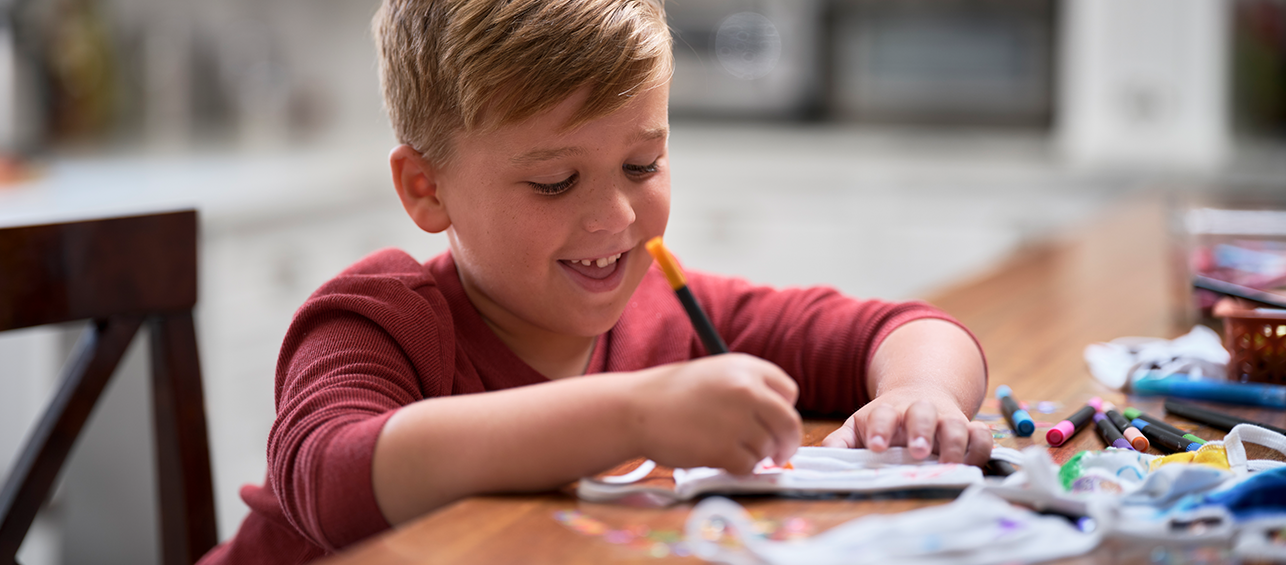Currently, we’re all facing new challenges we’ve never encountered before. Among them are parents helping their children through remote learning while managing all of their other responsibilities during the COVID-19 pandemic.
As a teacher in the Center for School Services at Cincinnati Children’s, I’d like to offer some suggestions to assist families through this unprecedented time. Here are nine suggestions that may help things run a little more smoothly:
9 Remote Learning Tips
1. Create a schedule
Schedules are important to help set expectations and maintain a sense of normalcy. They should work for your family’s unique situation and don’t need to match what other families are doing. The goal is to promote positive mental health by helping them know what’s coming next, not setting up additional battles. For younger children with short attention spans, 30 minutes may be the maximum amount of time they can handle with a pencil and paper worksheets. Set aside time for: specific school work and subjects, as well as reading time, physical activity, lunch, chores, family time and fun.
2. Set up separate work spaces
If you have multiple school-aged children, I recommend setting up separate work spaces for them. Whether it’s in separate rooms within the house, or in their own bedrooms, having space for them to work quietly will help them stay focused.
3. Have supplies readily available
Have your children get all of the supplies they need ahead of time, before sitting down. This will help minimize distractions. Supplies may include pencils, paper, art supplies, as well as a computer or other device. I also recommend using headphones for those who are doing online learning.
4. Utilize older siblings
So long as it won’t lead to more problems, your older children may love to help their younger siblings with their schoolwork. This could free up some time for you to get your work done!
5. Use online resources
Parents don’t need to be experts in all areas of school! There are so many great resources out there that can supplement their learning, and/or help explain their materials:
- Educational resources: A ginormous list of educational companies offering free subscriptions.
- Kahn Academy: Calling out this educational resource specifically because it is fantastic for math and science help at the high school level.
- Lunch Doodles with Mo Willems: the author and illustrator of Pigeon and Gerald leads a weekday virtual art lesson.
- Cincinnati Zoo’s daily safaris: check out their Facebook page each weekday at 3:00 for the animal lovers in your house.
- Cincinnati Symphony: Check out the Sound Discoveries where kids can make musical crafts and engage in activities.
6. Don’t hesitate to ask for help
If you have a question about your child’s particular assignment, don’t hesitate to reach out to your kids’ teachers for help! They’re trying to navigate this unprecedented time, too, and are willing to answer questions and help where needed.
7. Make Yourself Available
If you’re working from home, set aside a time during the day in which you’re available to your children without your laptop. During this time you can answer any questions they may have. Further, establish a preferred communication method for when they have a question that is outside of this time. Hand-written notes could work well in this situation.
8. Add time for fun
Try to build in as much fun as possible. In our house so far we’ve made slime, had a camp out in the basement, baked cookies, played games we’ve never played before, had movie marathons, and car driving excursions (before the Governor’s stay-at-home order!). You’ll want them to remember the good experiences that happened during this period of time, too.
9. Give yourself grace
This is an unprecedented situation! It is going to be messy and difficult. If you’re trying to juggle schoolwork, work, daily chores and to-do lists, maybe it’s time to let some of them go and focus on what really matters. Take a break, lie on the couch, and snuggle with your kids. Or play a game together and refocus on the gift of extra family time.





